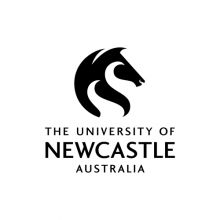The Australian government’s international education crackdown will make it harder for universities to attract students from a greater variety of countries, a forum has heard.
Leonie Patrick, director of international student recruitment at Western Sydney University, said Canberra’s proposal to cap foreign enrolments would deprive the sector of the cash it needed to cultivate new overseas sources.
“Diverse markets don’t yield quickly,” she told the THE Campus Live ANZ event. “It takes long-term investment. With caps in place there’s less budget, and with less budget comes less of an ability to spend in diverse markets.”
Ms Patrick said Australia had nurtured its dominant source countries, China and India, through sustained and coordinated effort. “Many institutions decided to…go in together. Agents followed. That’s when we get a bit of traction.”
She said joint effort was needed to cultivate enrolments from Africa, the epicentre of global demographic growth this century. “Diversity happens when a whole-of-Australia approach happens; when all of us feel that Africa is worth our time,” she said.
“It would be great if government would meet us in a partnership.”
Kent Anderson, deputy vice-chancellor (global) with event hosts the University of Newcastle, said there were also legal challenges.
“It is illegal to discriminate based on nationality,” Professor Anderson observed. “How are you going to do a differentiated admissions policy when it breaks Australian law?”
In practice, he said, universities selectively recruited students through “variable” scholarships that favoured particular groups. “If money…is tighter, how much variance will you have in your scholarships? How many people will you take from mid- to lower-SES [socioeconomic status] in their home country?”
Professor Anderson said Australia should aspire for diversity at the sectoral rather than institutional level. It should not matter if individual institutions specialised in certain countries, so long as the overall mix of nationalities was extensive.
He said foreign students naturally congregated in particular regions anyway, generally because emigres from their countries were concentrated there. Consequently, most students from Bhutan attended Western Australian universities while Indonesian students gravitated to Victoria and Nepalis to Sydney.
Michael Fay, special adviser to the Association of Southeast Asian Nations University Network, said Africa currently attracted just 1 per cent of Australian economic activity. “We trade more with Vietnam and invest more in the Netherlands than we do with all 54 countries of Africa combined,” he told the forum.
“You can either accept that there are challenges and diversify, or suffer the consequences.”
Luke Sheehy, chief executive of Universities Australia, said the proposed caps were an intervention by education ministers to “fix” a policy change from a former home minister: ministerial direction 107, which had slowed down visa processing and “taken a blowtorch to market diversification”.
Mr Sheehy said the sector had “missed the opportunity” to talk about international education “properly” more than a decade ago, after an earlier round of policy changes had been bedded down.
“We should have been having a conversation about…what does the sector look like, what’s the long-term viability? This is where you can have interesting conversations about institutional and perhaps regional distributions. You can’t do it in the middle of a crisis.”
Register to continue
Why register?
- Registration is free and only takes a moment
- Once registered, you can read 3 articles a month
- Sign up for our newsletter
Subscribe
Or subscribe for unlimited access to:
- Unlimited access to news, views, insights & reviews
- Digital editions
- Digital access to THE’s university and college rankings analysis
Already registered or a current subscriber? Login











